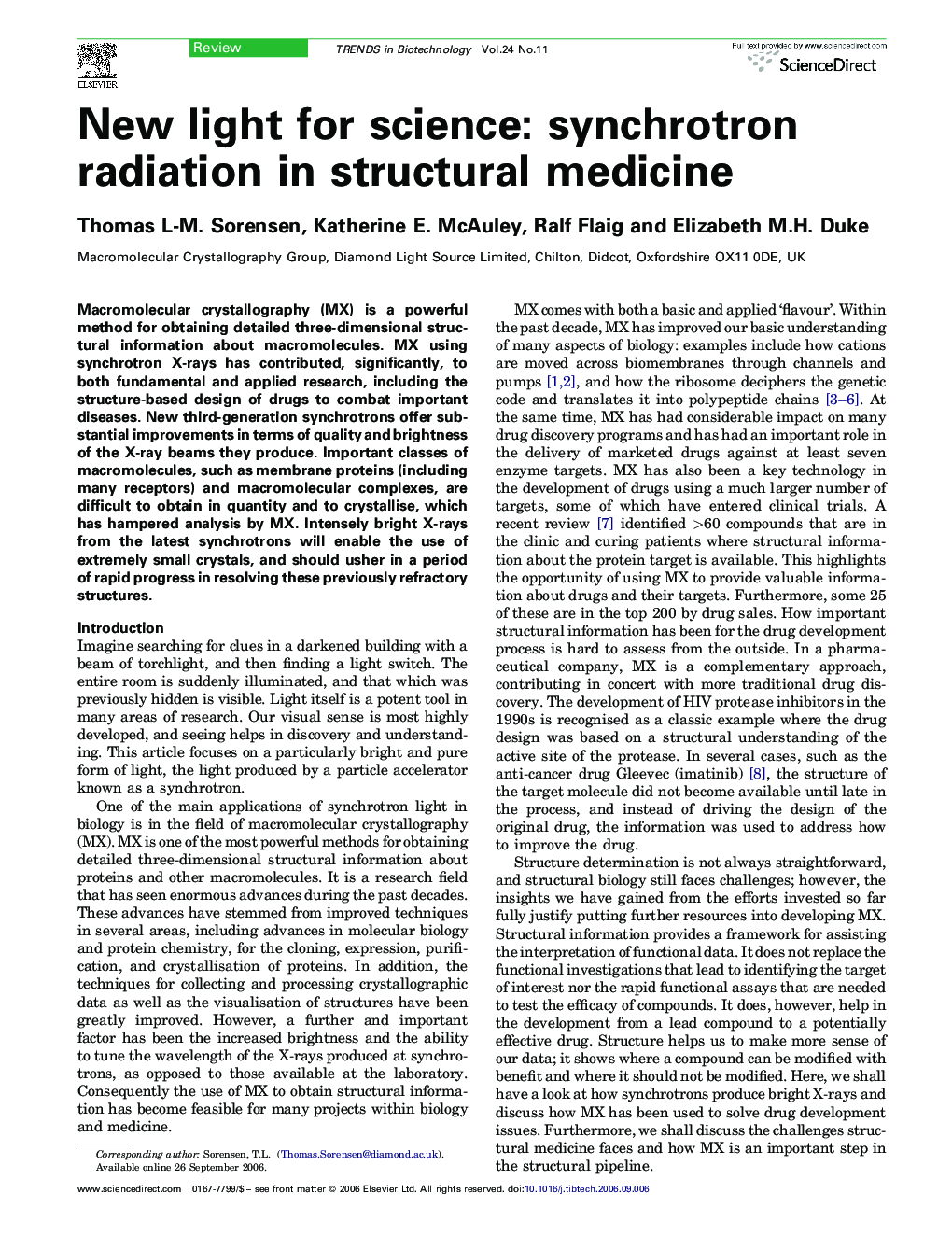| Article ID | Journal | Published Year | Pages | File Type |
|---|---|---|---|---|
| 37634 | Trends in Biotechnology | 2006 | 9 Pages |
Macromolecular crystallography (MX) is a powerful method for obtaining detailed three-dimensional structural information about macromolecules. MX using synchrotron X-rays has contributed, significantly, to both fundamental and applied research, including the structure-based design of drugs to combat important diseases. New third-generation synchrotrons offer substantial improvements in terms of quality and brightness of the X-ray beams they produce. Important classes of macromolecules, such as membrane proteins (including many receptors) and macromolecular complexes, are difficult to obtain in quantity and to crystallise, which has hampered analysis by MX. Intensely bright X-rays from the latest synchrotrons will enable the use of extremely small crystals, and should usher in a period of rapid progress in resolving these previously refractory structures.
